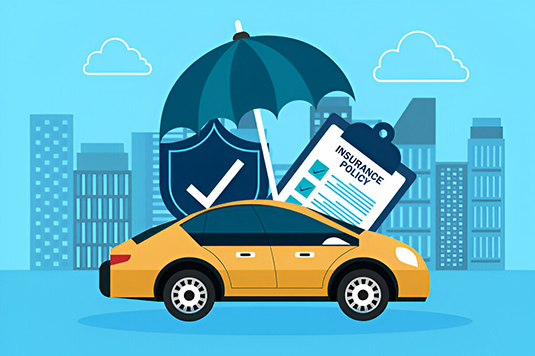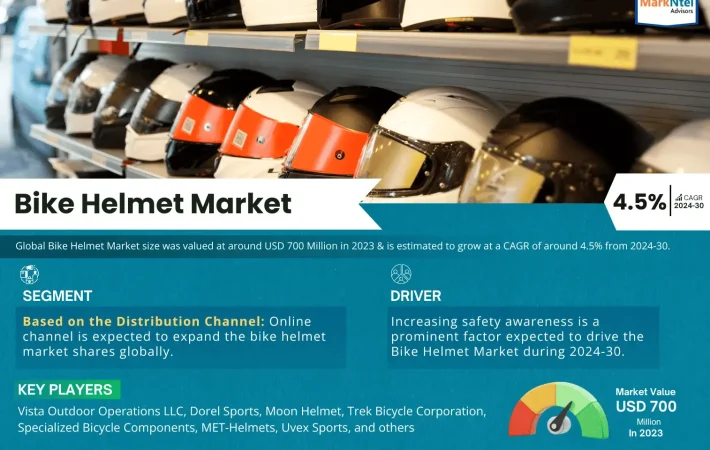Driving on a rainy day can be extremely complicated and risky because driving on roads covered in wet can reduce friction and degrade your distance visibility, and also increase the risk of accidents. Whether there is light drizzle or a pouring rain, according to the difference of weather, you should adjust your driving habits to be safe and keep yourself and others on the road safe. Below is a text that outlines ways to stay safe while driving in rain and being in control. For example, keep a safe distance from the vehicle in front of you and be careful not to hydroplane.
1. Slow Down and Maintain a Safe Speed
One of the first thing that you must do when driving in the rain is to slow down. As the roads get wet, the surface will be slippery and the level of friction between your tyres and the road will be decreased, giving you less grip. When driving in the rain, the speed at which you drive is a key factor.
Less Traction: Water causes more slippery conditions on the road, making it easier for your tyres to skid or slip.
Longer Stopping Distances: It takes longer to stop on wet roads, so driving at a slower speed gives you more time to react to obstacles or changes in traffic.
Tip: Drive as slow as you need to in order to keep your car under control – which could be at speeds well below the posted speed limit. In heavy rain, it is often better to be defensive. This probably means slowing down and driving below the posted speed.
2. Increase Following Distance
Driving too close to the vehicle in front of you is a dangerous practice, made worse in the rain because it gives you less time to respond if the car in front of you needs to stop or slow down suddenly.
More time to react: The bigger the gap, the more time you have to react when you see a car braking ahead or something else that demands an evasive manoeuvre, so you can avoid rear-ending another car.
Keeping Your Distance: The further away your vehicle is from the one in front of you, the less water spray you will take on the front windshield.
Tip: In damp conditions, extend your normal following gap from the car in front of you, giving yourself at least four to five seconds in which to react.
3. Use Headlights Appropriately
Lighting your way when it’s raining is necessary as headlights help you see the road in front, but they are important for others too, so other drivers can see you clearly.
Low Beams: Use low-beam headlights in the rain, day or night. High beams are too intense for rainy conditions and will reflect the light back to the sky and make it harder for you to see.
Automatic lights: Set your vehicle’s automatic headlamps to come on when you turn the ignition key to the ‘on’ position. Don’t automatically count on them to turn on in light rain or fog.
Hint: Turn on your headlights when it starts raining to enhance your own vision but also make yourself more visible to other drivers.
4. Avoid Sudden Movements
While being caught unawares is a common factor, the circumstances can vary: it might result from a sharp turn, a sudden swerve, a lane change, rapid deceleration or some other unexpected manoeuvre. In all situations, loss of control can easily occur: this is particularly true when the road surface is wet.
Steady Hand: Slow and steady movements with the steering wheel are important for keeping your car on the road. Sharp turns can cause your tyres to slip and skid.
Gradual Braking: Remove your foot slowly from the pedal to avoid locking the wheels or inducing an anti-lock braking system (ABS) unnecessarily; although ABS anti-locks the wheels to save you in the event of an emergency, if your car is so-equipped.
Tip: Plan your moves well in advance, and make subtle, gradual corrections to the steering, braking and acceleration in order to stay steady and in course.
5. Watch Out for Hydroplaning
Hydroplaning is one those terrifying occurrences when a layer of standing water is created between the surface of the road and your tyres, literally causing you to skid off road via sheer loss of traction.
Signs of Hydroplaning: When hydroplaning occurs, you may notice the steering feeling light or unresponsive. You may also notice the car begins to drift or slide.
How to Respond: If you start to hydroplane, stay calm. Ease off the accelerator and avoid sudden steering or braking. Steer in the direction you want to go, gently, until the wheels regain traction.
Hydroplaning: If the water is too deep, skimming on top becomes unavoidable. Slow down. Avoid puddles. Make sure the tread on your tires is sufficient to get at the water below. Good tyres are necessary for that. Bring the car to a stop or turn it off the road just prior to a crash if you begin to hydroplane.
6. Avoid Standing Water and Puddles
But it is particularly dangerous to drive your car through water that has stood or during driving through water that has already collected in large quantities on the roadways, such as when it rains a lot. This is a common and often fatal accident with many motorists.
There are several reasons for this. Firstly, standing water can cause cars to hydroplane, which is when one or more of the car’s wheels start skidding. Secondly, while driving through standing or collected water on the road, the cause of the accident can not be established beforehand, and may only be found out after the accident, such as potholes, rocks or broken glasses.
Hidden Hazards: Puddles can conceal potholes, debris, or other obstacles that could damage your vehicle or cause you to lose control.
Loss of Control: You may hydroplane, losing control of your vehicle, or your engine could stall from the standing water.
To be safe, try to avoid driving through a puddle of standing water. If you can’t avoid it, gradually manoeuvre through the puddle if you don’t want to get stuck or cause any damage.
7. Ensure Windshield Wipers Are in Good Condition
When driving in the rain you need good vision so that your windscreen wipers clear the way.
Over time, wiper blades become worn. Perhaps you’re suffering from streaky or foggy-looking wipers. Or maybe they’re chattering across the windscreen and skipping left and right.
Change: Get into the habit of replacing your windshield wipers at least once a year, ideally in summer before the rainy season, so they can clean
Constant gravel on the roads means it’s a good idea to check your wiper blades regularly and replace as soon as they show the slightest wear. And remember to refill your windshield washer tank regularly with fluid that won’t freeze in cold temperatures.
8. Use Your Defroster to Prevent Fogging
When it’s raining outside, the car inside get humidity and the widows cover by fog.This response retains citations and quotes from the input.
Windshield and window defogger: Drive using your windshield and window defogger if you have them to help de-fog. The air-conditioning’s drying effect removes moisture from the air, helping to keep fog away.
DIY Defog: If your car’s defroster isn’t effective, you can also use a clean towel or anti-fog solution on the inside of the glass.
Tip: Keep your defroster going when driving in the rain to stay clear. Warm up your windows quickly when they fog.
9. Avoid Using Cruise Control
Cruise control is an useful function for driving long distances, but it is dangerous to use it in heavy rain.
Cruise control causes the vehicle to lose responsiveness, leading to a delay in your reaction time if you need to slow or stop while driving.
Higher risk of hydroplaning: If your vehicle is equipped with cruise control, using that function will also keep your car at a constant speed in wet conditions, increasing your risk of hydroplaning. If your vehicle starts to hydroplane while you are using cruise control, it could take far longer to regain control
Tip: In wet weather, turn cruise control off and drive at a controlled speed, keeping you attentive and able to meet emergency manoeuvres.
10. Plan for Extra Travel Time
Rainy days will bring slower traffic, so a good plan is to add travelling time as insurance against feeling rushed.
DON’T: Rush Leave early to arrive at your destination in plenty of time so you do not feel pressured to speed or make hazardous manoeuvres.
Survey External Conditions: Check traffic reports and current weather conditions prior to departure to avoid road closures, accidents and other impediments.
Tip: If you leave early you avoid the stress, can drive more cautiously and safety in inclement weather and save 20 per cent of the money you would have spent if you arrived late.
11. Be Extra Cautious at Intersections
Rainy weather is especially dangerous at intersections since wet roads have poor braking ability and other drivers may have limited driving skills to see your vehicle.
Slow: You don’t need to speed up just because the light is green. You’ll have more time to stop if the roads are wet. And other drivers may have missed stopping distance.
Pedestrians and cyclists: Watch out for visibility Reduced visibility in the rain affects pedestrians and cyclists as much as other drivers. Watch for people at crosswalks and pedestrian crossings to avoid crashes.
Tip: Always approach intersections with caution and be prepared to stop if necessary.
12. Know When to Pull Over
Rather, pull over, and let the metaphorical rain go by, especially if you feel yourself starting to drive unsafely because of the rain. And stop at once if your visibility drops to the point that you’re feeling unsafe on the road, or if you’re feeling very much out of your comfort zone.
Safe Spot: Get out of traffic at a rest area or parking lot. Never pull over on the side of the road where other drivers may not see you.
Safety Tip: If you need to stop on the side of the road, switch on your hazard lights to help drivers see your vehicle.
Tip: If you don’t feel safe, stop. It’s very seldom that the condition is going to get better, so waiting it out is often your safest course of action.
Conclusion: Drive Safely in the Rain
Driving in the rainy days not so easy. You have to adjust your driving style and always be careful on the road. Drive slowly with right distance between you and other cars to avoid accidents on the road. And no destination worth risking your life. Take care and safe driving.







Leave a comment
Your email address will not be published. Required fields are marked *